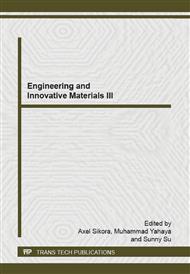p.133
p.138
p.145
p.149
p.154
p.159
p.165
p.175
p.180
Cementite Precipitation of a H21 Tool Steel after Hot Compression and Double Temper
Abstract:
The cementite precipitation behavior in the martensite and banite of the H21 tool steel under high temperature axisymmetric compression test and double temper was investigated. The main purpose on this work is to develop a better understanding regarding the transformation mechanism of bainite and martensite in a H21 tool steel. The selected deformation temperatures were 1100 oC and 1000 oC and the double temper process was carried out at 650 oC for 1 hour respectively. The results showed that the cementite was sensitive to the stress. The applied stress has affected the Fe3C precipitation behaviour by decreasing the number of variants carbides in tempered martensite and decreasing the number of a single variant carbides in tempered lower bainite. The results were in agreement with a displacive mechanism of martensite and bainite transformation. It was also found that hot deformation temperatures selected in this work have the same contribution in decreasing number of variant carbides in tempered martensite and decreasing number of single variant carbides occurred in tempered lower bainite.
Info:
Periodical:
Pages:
154-158
Citation:
Online since:
October 2014
Authors:
Keywords:
Price:
Сopyright:
© 2014 Trans Tech Publications Ltd. All Rights Reserved
Share:
Citation:


